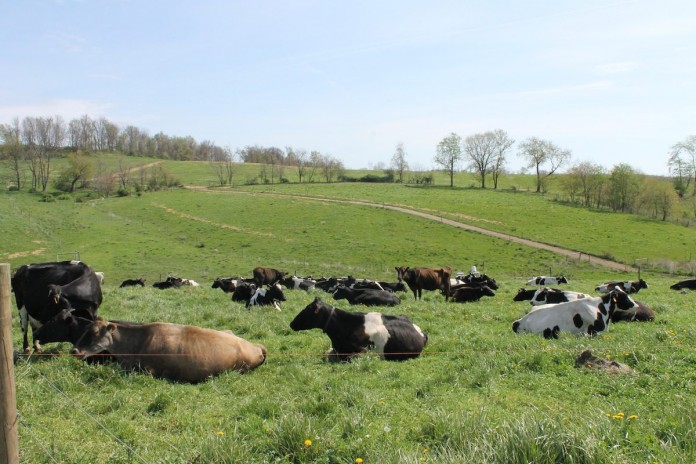And there we have it: we are in the sunset of 2020. And we all know it has been a year full of topics and challenges we did not expect. But, the wheel keeps turning and the plants still grow, testing our management skills and keeping us sharp.
Back in my early days of soybean research management, two weeds became problems in some test plots that I will never forget: hemp dogbane and deadly nightshade. I was worried about hemp dogbane just because of the concern I had for the success of the test plots, but the farmer who hosted the plots took care of it.
The deadly nightshade, on the other hand, required hand pulling and a lot of sweat across multiple acres in the middle of August, and now I descend into obsessive weeding whenever I see it in the garden because I have no desire to deal with that again.
Dogbane and milkweed
But, as many can attest, those become the experiences that serve us later when other problems arise and help us make sense of the tools in our toolbox. Hemp dogbane just happens to be a plant I have been questioned on multiple times this fall, primarily about weed control in pastures.
Dogbane (Apocynum cannabinum) and common milkweed (Asclepias syriaca) are often discussed together because they are look-alikes and may occur together or nearby in similar conditions.
Dogbane will have a milky sap (latex) when the stem is broken, exhibits red coloration in the stems, and branches out in the upper canopy. Milkweed is much the same, though usually single-stemmed without branching.
Established roots
Their success as weeds is partly due to underground rhizomes from which new plants can grow. If there is an infestation, it is usually because of regrowth from established roots below the soil line.
As well as weed-like characteristics, it is well documented that both dogbane and milkweed can be toxic to grazing animals in both wet and dry forms. Fortunately, grazing animals are adept at avoiding the plants if other choices are available, but often management is warranted to proactively prevent problems at a later time.
Management
Dogbane is a warm season perennial and a review across pasture management guides for Ohio and Pennsylvania shows agreement on several concepts. Management strategies target the plant when it is mature. Essentially, targeting tall plants before they have the chance to produce seed is ideal for both mowing and herbicides.
If attempting a combination, plants should be allowed to regrow to full height after mowing before using an herbicide. This means dogbane and milkweed control is a late summer and fall activity and ensures plenty of leaf surface for the herbicide to do its work. Mowing will likely suppress plant vigor but the underground spreading root structures will persist.
In general, between 60 to 80% control is to be expected by herbicide applications.
That makes control of dogbane a multi-year effort that requires chasing escapees the following year, and likely after that as well. Extension resources are readily available to help in decision making regarding these weeds. It is likely you may want to fold dogbane control into a plan to manage other perennial and biennial weeds as well.
The herbicide weed control window has come to a close for 2020, and at this point the discussion is about how to work a plan into 2021. It has been said, “Give me six hours to chop down a tree and I will spend the first four sharpening the axe.” And, “If you don’t know where you are going, you’ll end up someplace else.”
Hemp dogbane just happens to be the example to come across my desk this fall, but with all weeds and pasture management we like to stress taking the time to evaluate and plan for the future. In the absence of planning, nature bats last.













